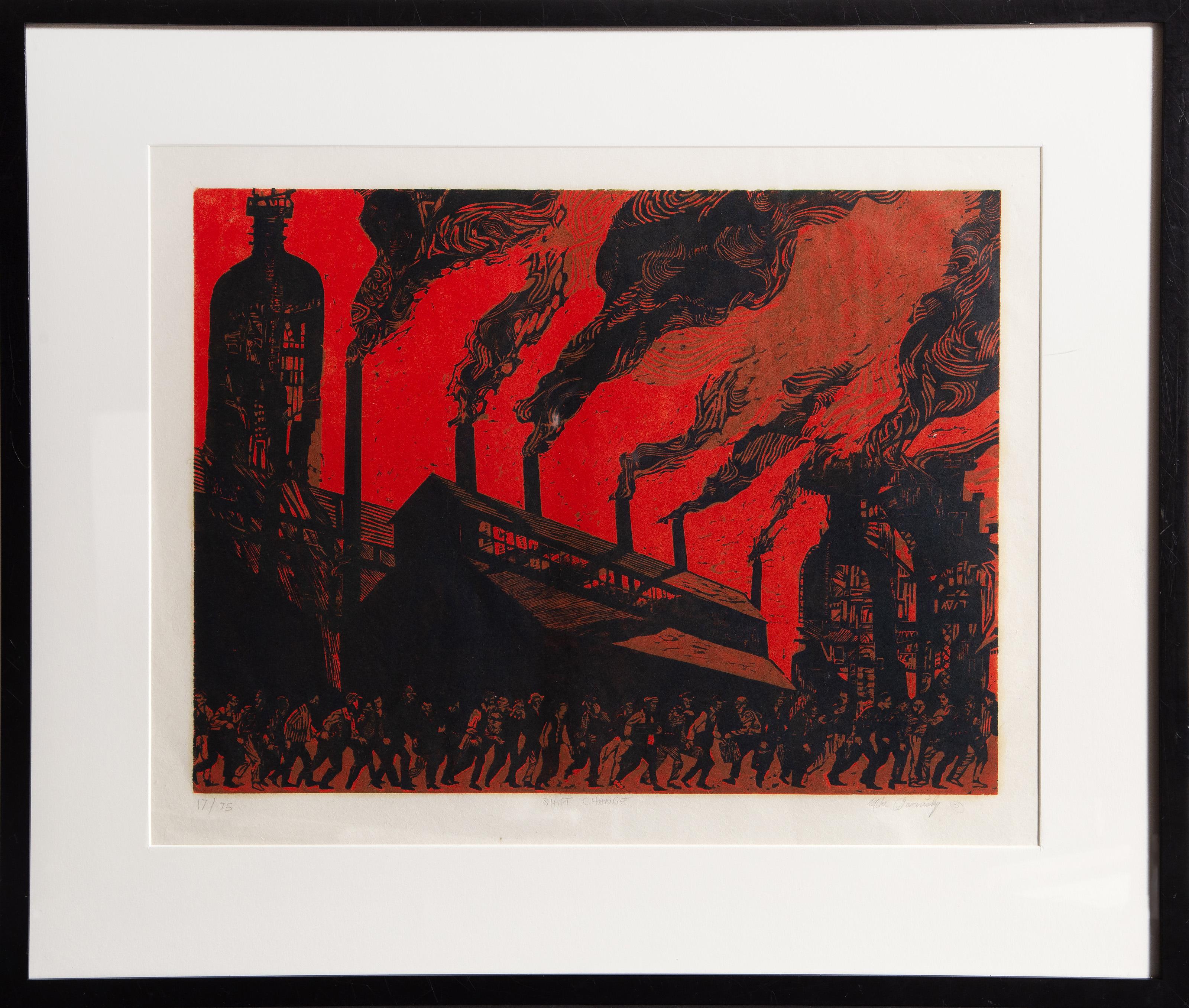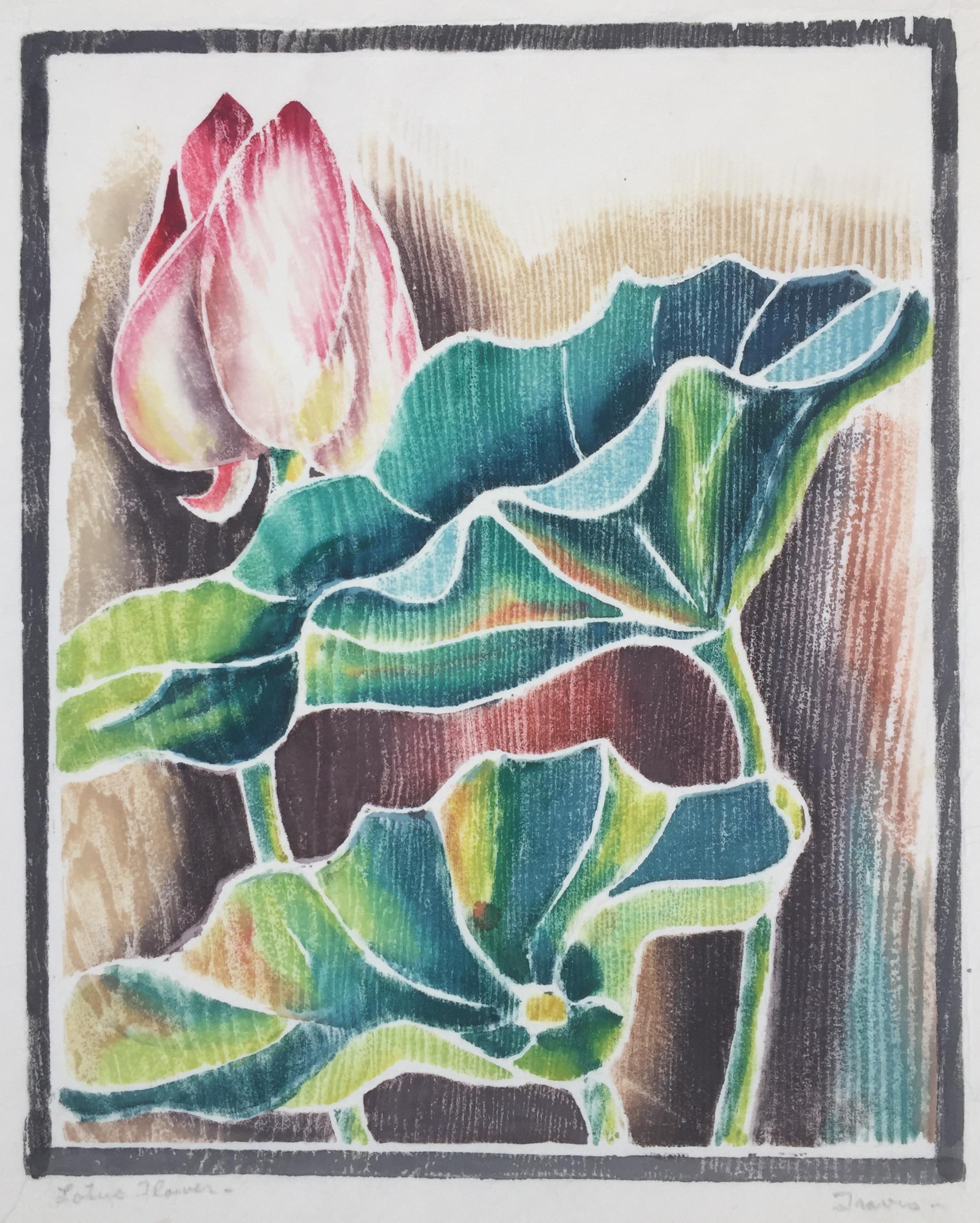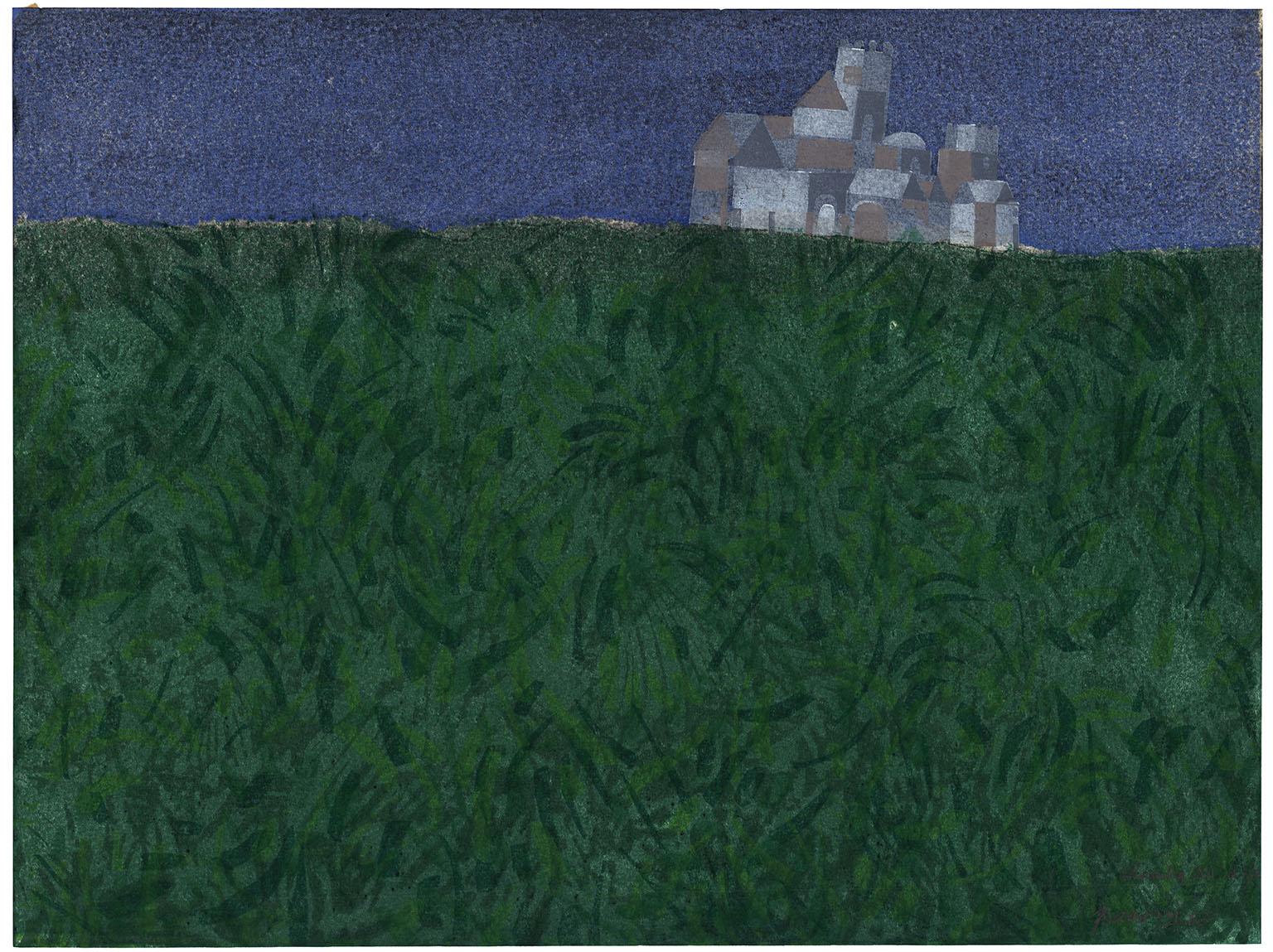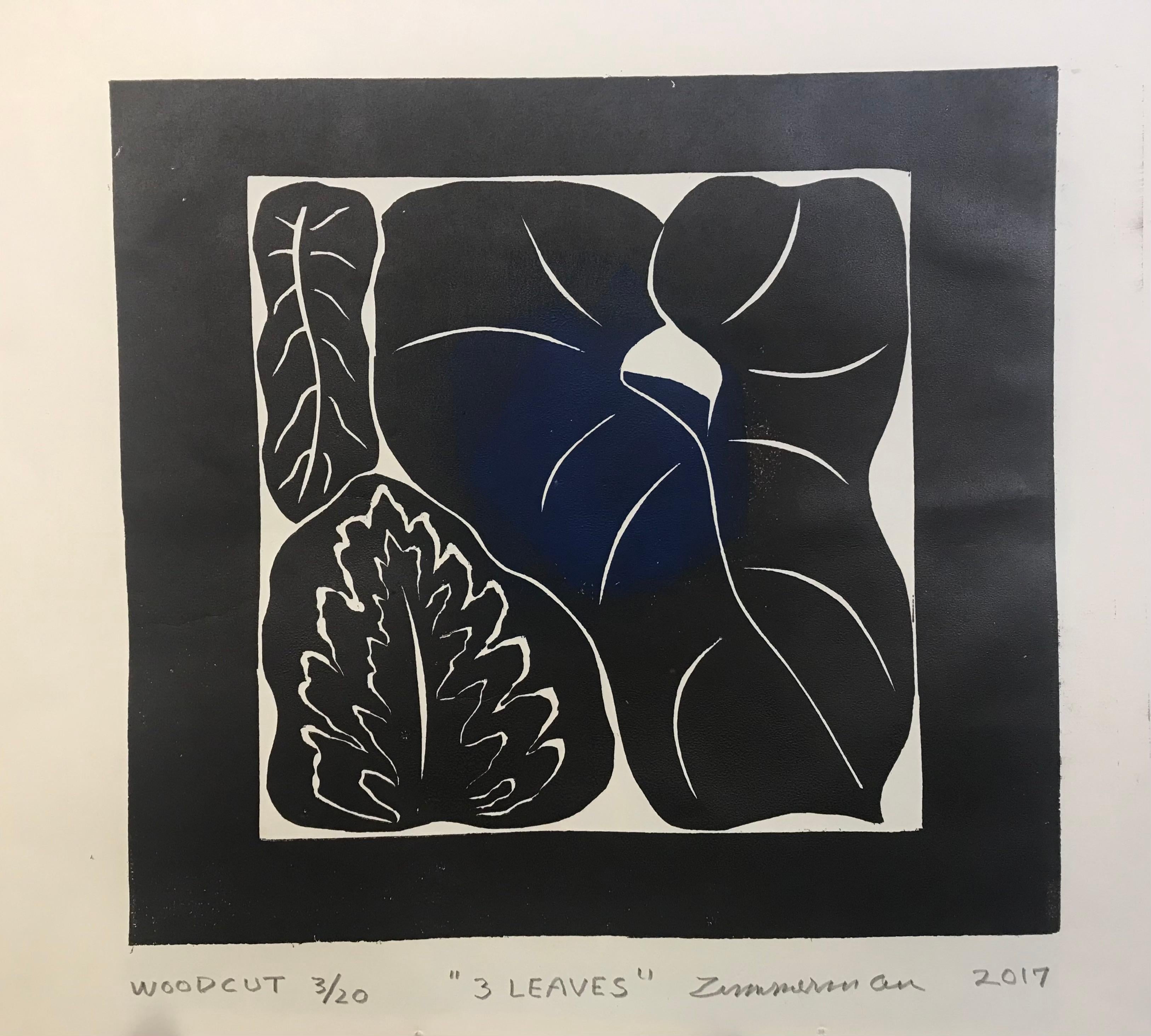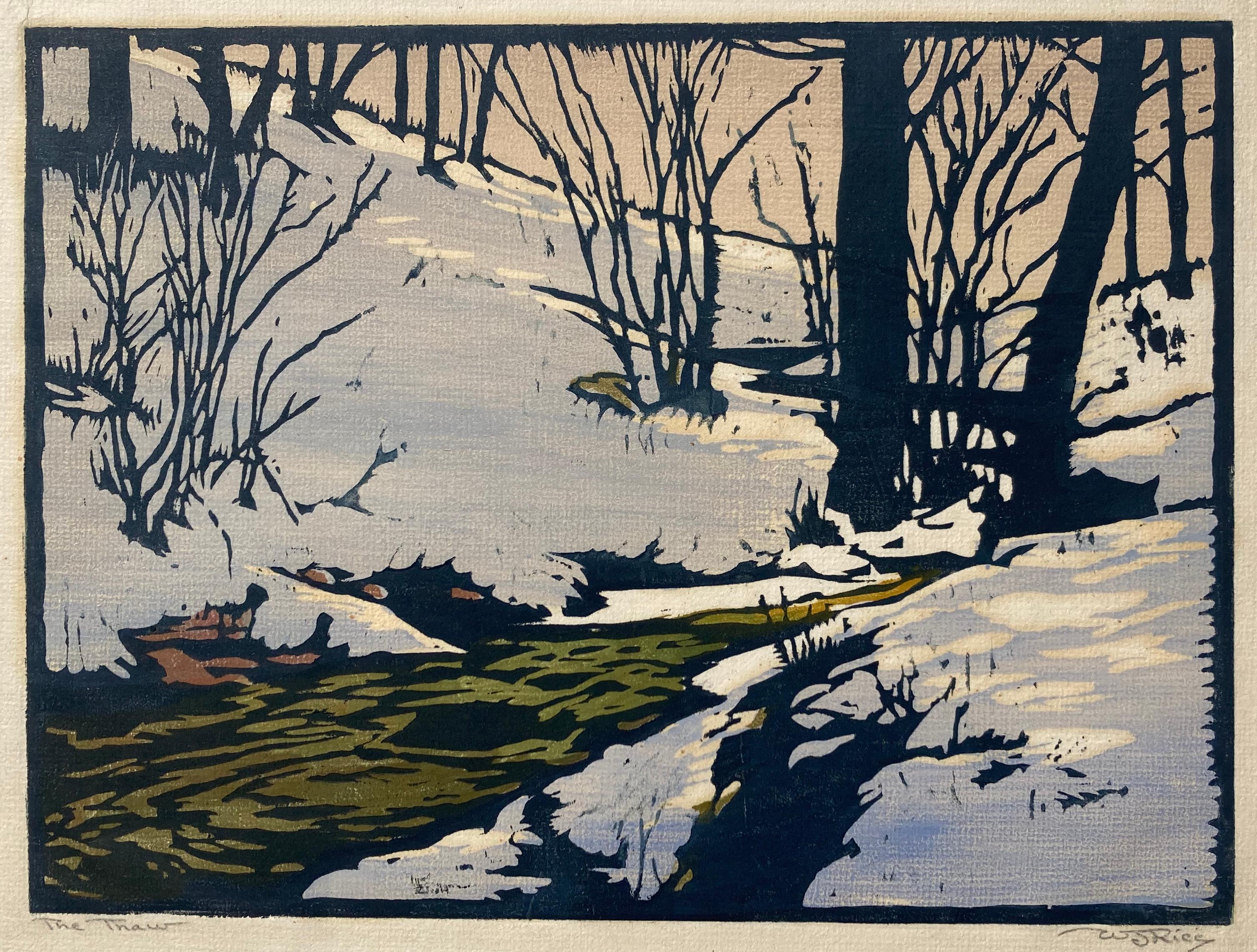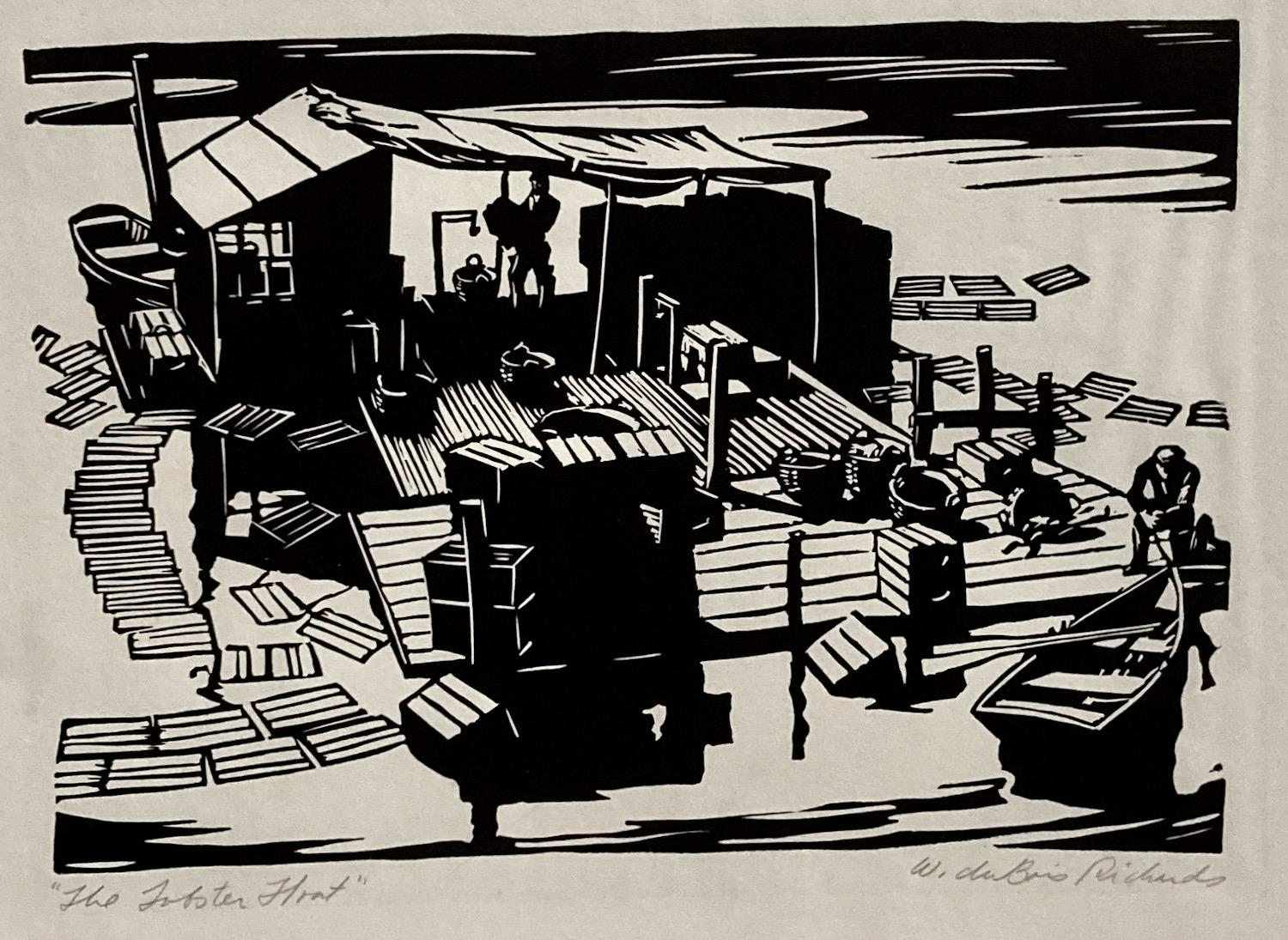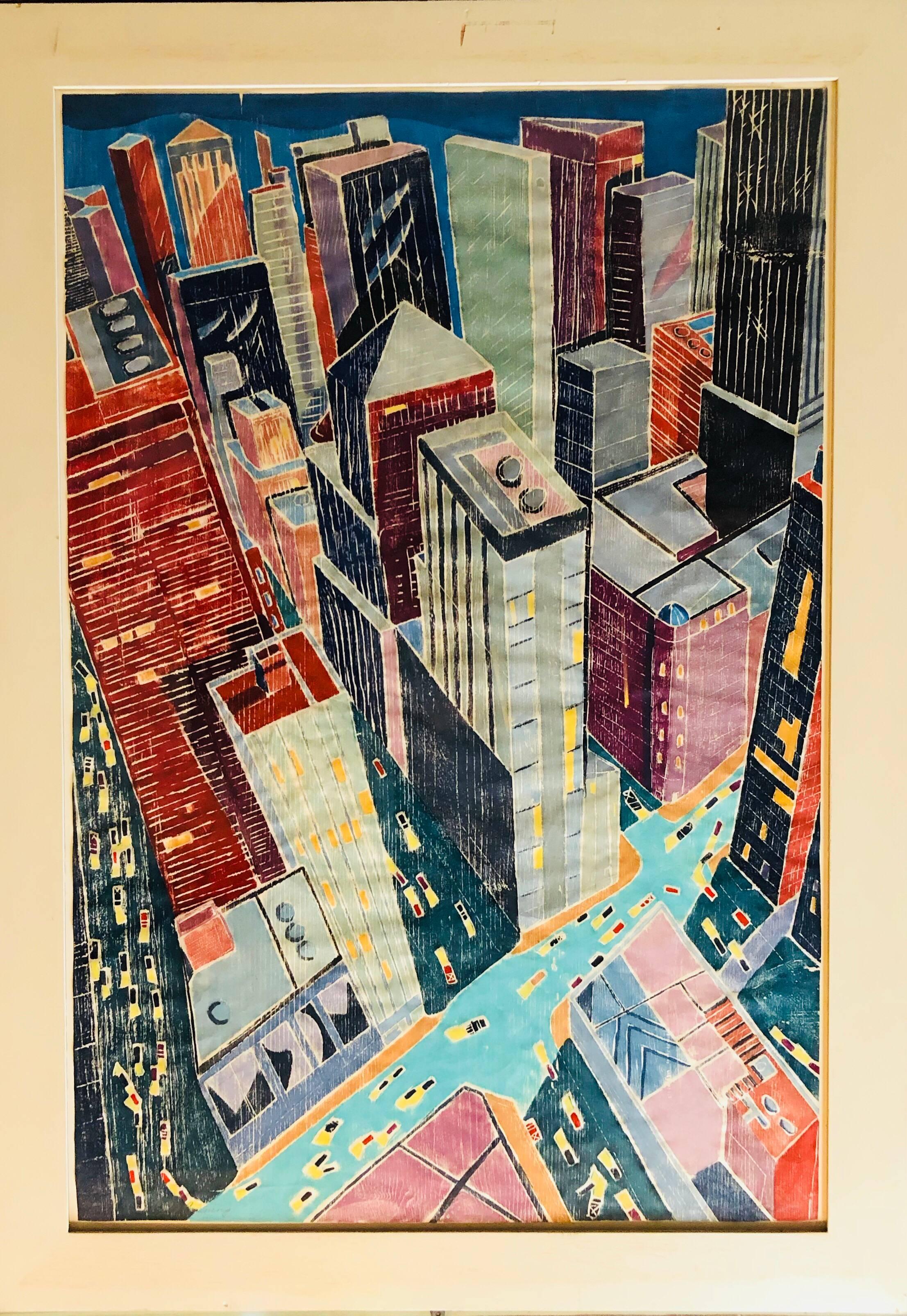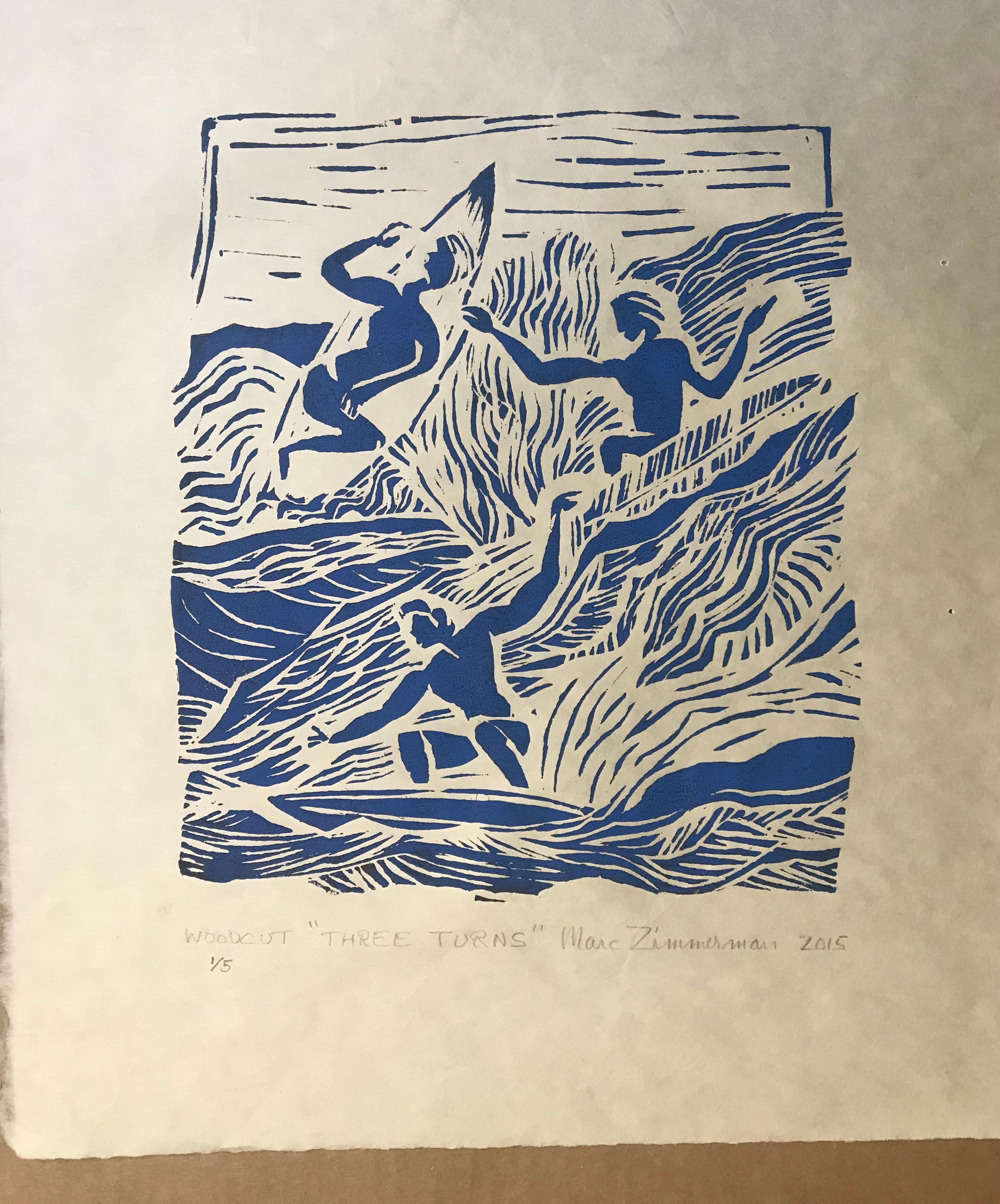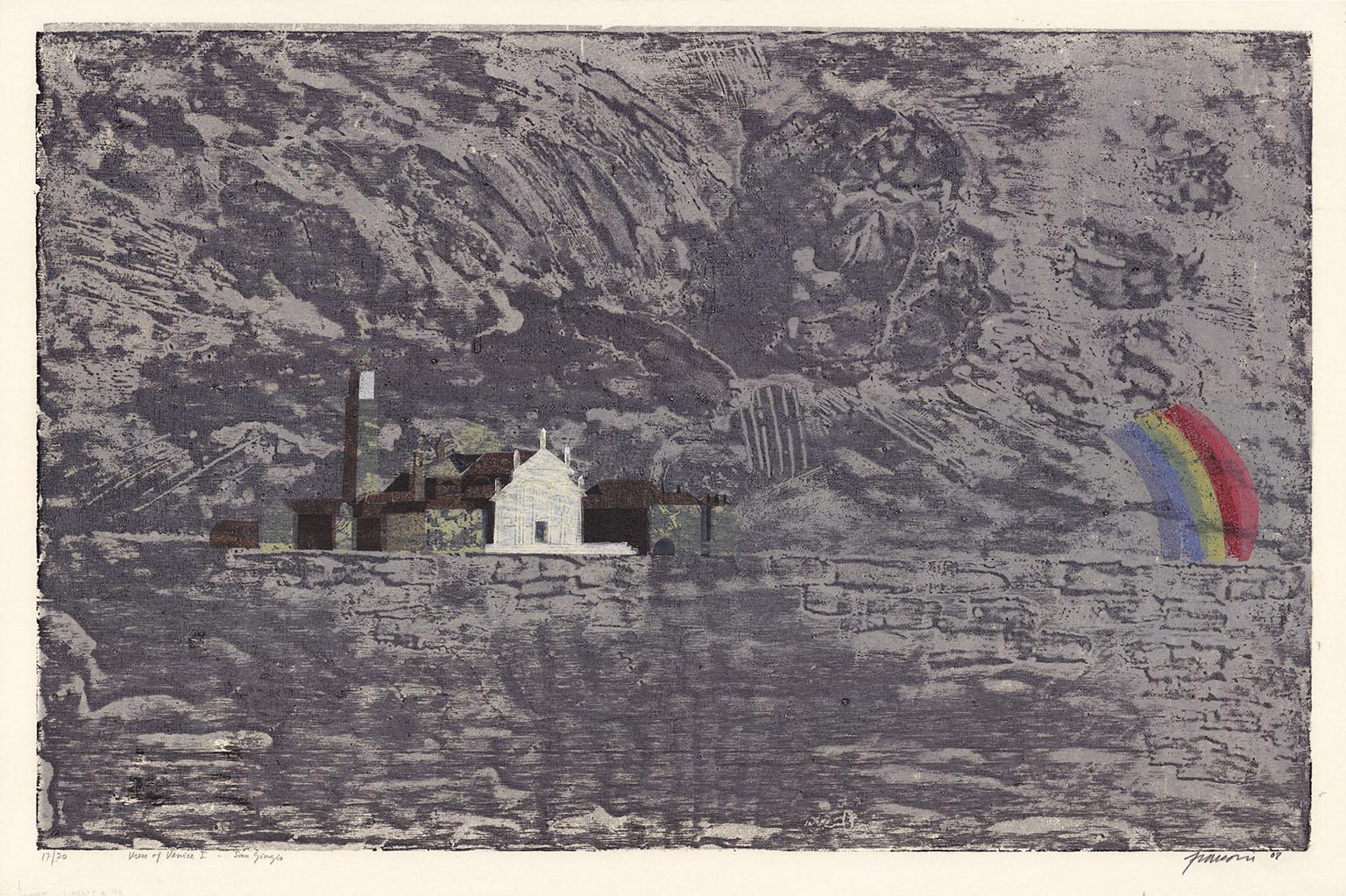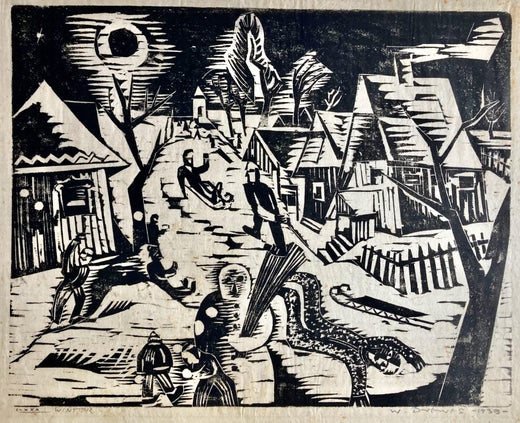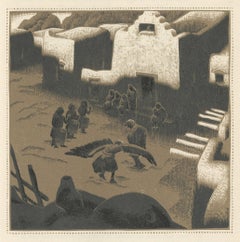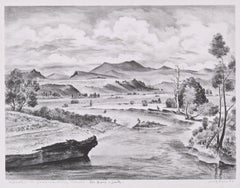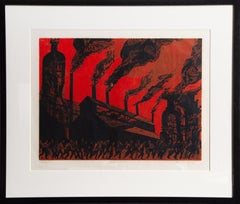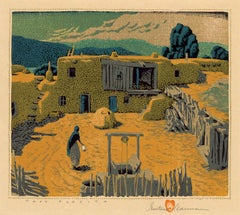
Forest or Blue Forest
View Similar Items
Werner DrewesForest or Blue Forest1958
1958
About the Item
- Creator:Werner Drewes (1899-1985, American)
- Creation Year:1958
- Dimensions:Height: 11.25 in (28.58 cm)Width: 24.5 in (62.23 cm)
- Medium:
- Movement & Style:
- Period:
- Condition:
- Gallery Location:Fairlawn, OH
- Reference Number:Seller: FA33411stDibs: LU14012497202
Werner Drewes
Werner Drewes was a painter, printmaker, and teacher, who was born in Canig, Germany, in 1899. His father, a Lutheran Minister, hoped he would become an architect, but Werner chose the life of an artist. After he served on the front line in France during the war, Werner was admitted to the Bauhaus in 1921, where he studied under Klee, Itten, and Muche. Later, he traveled through Europe to study such old masters as Tintoretto, Velasquez and El Greco. After marrying Margaret Schrobsdorff, they traveled throughout South America, North America and Asia. In 1930, Werner immigrated to New York City with his family. In New York City, despite the Depression, Werner joined other Bauhaus artists such as Piet Mondrian and Lyonel Feininger to make a living as an artist. This group became the core of the American Abstract Artists group. Werner taught at Columbia University, worked on the design of the 1939 World's Fair building, and had shows at the Museum of Modern Art, Kleeman Gallery, and elsewhere. In 1946, he accepted a tenured position at the Washington University in St. Louis. In his later years, he moved to Virginia and continued to show at galleries in Germany, Turkey, and in the United States. The Smithsonian held a show attributing his 65 years as a printmaker at the Museum for American Artists.
- An Eagle Ceremony at Tesuque PuebloBy Gustave BaumannLocated in Fairlawn, OHAn Eagle Ceremony at Tesuque Pueblo Woodcut printed in two colors, 1932 Unsigned as usual; initialed in the plate lower left (see photo) As published by Elmer Adler in "The Colophon:...Category
1930s American Modern Landscape Prints
MaterialsWoodcut
- River ReflectionsBy Arthur Wesley DowLocated in Fairlawn, OHRiver Reflections Color woodcut, c. 1910 Unsigned Provenance: Dow Family Album, Cincinnati Condition: Excellent Image size: 2 1/2 x 4 inches Sheet size: 3 1/8 x 4 7/8” A color varian...Category
1910s American Modern Landscape Prints
MaterialsWoodcut
- Trout Fishing on the Gunnison (Colorado)By Adolf DehnLocated in Fairlawn, OHTrout Fishing on the Gunnison (Colorado) Lithograph, 1941 Signed and dated '42 in pencil lower right Annotated lower left: "40 Prints-The Gunnison River, Colorado-For Anne & Jack" Ed...Category
1940s American Modern Landscape Prints
MaterialsLithograph
- Western Hills Viaduct Under ConstructionBy Louis Conrad RosenbergLocated in Fairlawn, OHWestern Hills Viaduct Under Construction Drypoint, June 1931 Signed in pencil lower right (see photo) Initialed and dated in the plate lower right above pencil signature (see photo) From: Cincinnati Series, 1930-1931, 8 plates, this No. 5 Small edition, not specified From Greenfield Hill Condition: Excellent Image/Plate size: 8 1/2 x 15 1/4 inches Sheet size: 11 1/4 x 18 1/2 inches Louis Conrad Rosenberg 1890-1983 An American architectural etcher...Category
1930s American Modern Landscape Prints
MaterialsDrypoint
- Cincinnati Union Terminal, Perspective From EastBy Louis Conrad RosenbergLocated in Fairlawn, OHCincinnati Union Terminal, Perspective From East Drypoint, 1930-1931 Signed in pencil lower right (see photo) Initialed and dated the the plate above the pencil signature From: Cincinnati Series (8 Plates), this No. 2 Edition: 155, completed May 4, 1931 Delivered to Fellheimer & Wagner, 1931 Louis Conrad Rosenberg 1890-1983 An American architectural etcher and engraver of the 1920's and 1930's era, Louis Conrad Rosenberg first studied at the Massachusetts Institute of Technology...Category
1930s American Modern Landscape Prints
MaterialsDrypoint
- New York NightBy Adolf DehnLocated in Fairlawn, OHNew York Night\Lithograph, 1930 Edition: 30 Printer: Meister Schulz, Berlin Printed on heavy wove paper without watermark This lithograph was created in...Category
1930s American Modern Landscape Prints
MaterialsLithograph
- Shift Change, Social Realist Woodblock Print by Mike GoscinskyLocated in Long Island City, NYShift Change Mike Goscinsky, American (1933–2021) Woodblock on thin wove paper, signed, titled and numbered in pencil Edition of 15/75 Image Size: 14 x 19 inches Size: 22 x 26.5 in. ...Category
1990s American Modern Landscape Prints
MaterialsWoodcut
- 'Taos Placita' — 1940s Southwest RegionalismBy Gustave BaumannLocated in Myrtle Beach, SCGustave Baumann, 'Taos Placita', color woodcut, 1947, edition 125. Baumann 132. Signed, titled, and numbered '20-125' in pencil; with the artist’s Hand-in-Heart chop. A superb, richly-inked impression, with fresh colors, on fibrous oatmeal wove paper; the full sheet with margins (2 to 3 1/8 inches); slight rippling at the left sheet edge, in excellent condition. Matted to museum standards, unframed. Image size 9 5/8 x 11 1/4 inches (244 x 286 mm); sheet size 13 1/4 x 17 inches (337 x 432 mm). Collections: New Mexico Museum of Art, Phoenix Art Museum, Wichita Art Museum. ABOUT THE ARTIST Gustave Baumann (1881-1971) was a renowned printmaker and a leading figure of the American color woodcut revival whose exquisite craftsmanship and vibrant imagery captured the essence of the Southwest. "A brilliant printmaker, Baumann brought to the medium a full mastery of the craft of woodworking that he acquired from his father, a German cabinetmaker. This craftsmanship was coupled with a strong artistic training that resulted in the handsome objects we see in the exhibition today. After discovering New Mexico in 1918, Baumann began to explore in his woodblock prints of this period the light. color, and architectural forms of that landscape. His prints of this period are among the most beautiful and poetic images of the American West." —Lewis I. Sharp, Director, Denver Art Museum Baumann, the son of a craftsman, immigrated to the United States from Germany with his family when he was ten, settling in Chicago. From 1897 to 1904, he studied in the evenings at the Art Institute of Chicago, working in a commercial printmaking shop during the day. In 1905, he returned to Germany to attend the Kunstwerbe Schule in Munich, where he decided on a career in printmaking. He returned to Chicago in 1906 and worked for a few years as a graphic designer of labels. Baumann made his first prints in 1909 and exhibited them at the Art Institute of Chicago the following year. In 1910, he moved to the artists’ colony in Nashville, Indiana, where he explored the creative and commercial possibilities of a career as a printmaker. In 1915, he exhibited his color woodcuts at the Panama-Pacific International Exposition in San Francisco, winning the gold medal. Among Baumann’s ongoing commercial activities was his work for the Packard Motor Car Company from 1914 to 1920 where he produced designs, illustrations, and color woodcuts until 1923. In 1919, Baumann’s printmaking work dominated the important exhibition of American color woodcuts at the Detroit Institute of Arts. Twenty-six of his prints were included, far more than the works of any other artist. A set of his blocks, a preparatory drawing, and seven progressive proofs complemented the exhibition. That same year, Baumann worked in New York and, over the summer, in Provincetown, Massachusetts. His airy images of Cape Cod employed soft, pastel colors and occasionally showed the influence of the white-line woodcut technique. Many of his Chicago artist friends had traveled to the southwest, and Baumann became intrigued by their paintings, souvenirs, and stories of an exotic place named Taos, New Mexico. In the summer of 1918, he spent the summer in Taos sketching and painting before visiting Santa Fe. Paul Walter, the director of the Museum of New Mexico, offered him a studio in the museum's basement. Inspired by the rugged beauty of the Southwest—the vibrant colors and dramatic landscapes of the region became a central theme in his work, influencing his artistic style and subject matter for the remainder of his career. Later in the decade, he traveled to the West Coast and made prints of California landscape. Baumann's prints became synonymous with the Southwest, capturing the spirit of its place in America's identity with a unique sense of authenticity and reverence. His iconic images of desert vistas, pueblo villages, and indigenous cultures served as visual tributes to the region's rich cultural heritage, earning him a dedicated following among collectors and curators alike. A true craftsman and artist, Baumann completed every step of the printmaking process himself, cutting each block, mixing the inks, and printing every impression on the handmade paper he selected. His dedication to true craftsmanship and his commitment to preserving the integrity of his artistic vision earned him widespread acclaim and recognition within the art world. About the vibrant colors he produced, Baumann stated, “A knowledge of color needs to be acquired since they don’t all behave the same way when ground or mixed...careful chemistry goes into the making of colors, with meticulous testing for permanence. While complicated formulae evolve new colors, those derived from Earth and metal bases are still the most reliable.” In the 1930s, Baumann became interested in puppet theater. He designed and carved his own marionettes and established a little traveling company. From 1943 to 1945, the artist carved an altarpiece for the Episcopal Church of the Holy Faith in Santa Fe. In 1952, a retrospective exhibition of his prints was mounted at the New Mexico Museum of Fine Arts. Throughout his prolific career, Baumann executed nearly four hundred color woodcuts. Baumann’s woodcuts...Category
1940s American Modern Landscape Prints
MaterialsWoodcut
- LOTUS FLOWER - ROEDING PARK - Provincetown StyleBy Mary TravisLocated in Santa Monica, CAMARY TRAVIS (Active 1935 - 40) LOTUS FLOWER ROEDING PARK. c.1935-40 White line color woodcut. Signed and titled in pencil. Small edition. 10” x 8”. Full sheet. tears in upper margin. Travis worked in Berkeley, California and was probably a follower of William S...Category
1930s American Modern Landscape Prints
MaterialsWoodcut
$2,000 Sale Price20% Off - LOTUS FLOWER - Provincetown StyleBy Mary TravisLocated in Santa Monica, CAMARY TRAVIS (1893-1976)) LOTUS FLOWER c. 1935-40 White line color woodcut. Signed and titled in pencil. Small edition. 9 ¾” x 7 7/8”. Full sheet. Some creasing in the margins. Travis worked in Berkeley, California and was probably a follower of William S...Category
1940s American Modern Landscape Prints
MaterialsWoodcut
$2,120 Sale Price20% Off - "The Long White Road, " Landscape Wood EngravingBy Lowell Merritt LeeLocated in Milwaukee, WI"The Long White Road" is an original wood engraving by Lowell Merritt Lee. A long white road stretches past empty barren trees under a cloudy sky. Image: 6" x 5" Framed: 15.37" x 1...Category
1930s American Modern Landscape Prints
MaterialsWoodcut
- Alhambra XIIBy Antonio FrasconiLocated in New York, NYAntonio Frasconi created the color woodcut entitled “Alhambra XII” in 1963. This piece is signed titled, and dated in pencil. The edition is 12, and paper size is 18 x 24 inches. “...Category
1960s American Modern Landscape Prints
MaterialsWoodcut
